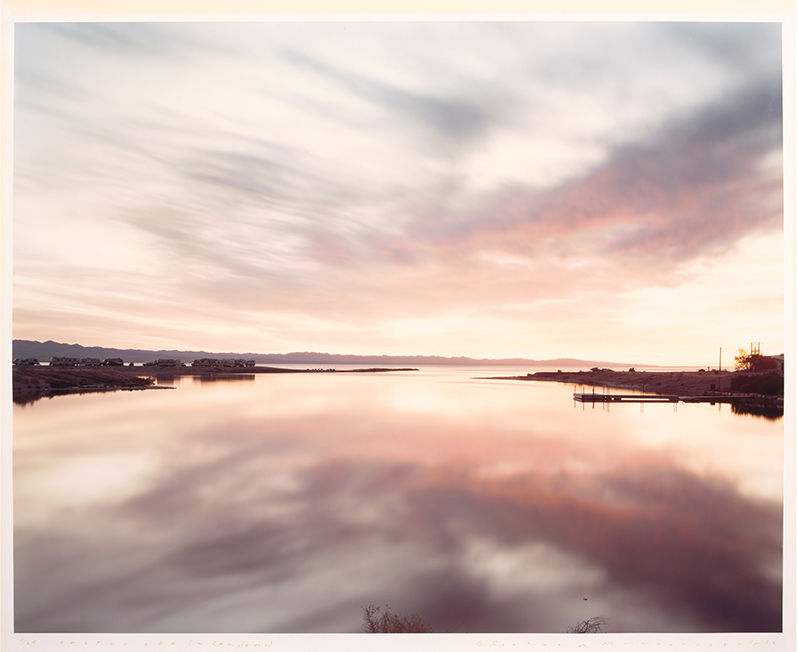The Autry Museum of the American West, across from the Los Angeles Zoo in Griffith Park, has a pleasant, if slightly airbrushed, pioneer-era feel. The site has a courtyard, a café, a theater and a store that sells Pendleton blankets, turquoise jewelry and books with titles such as “Kodachrome Memory” and “The American Dog at Home.”
Through Jan. 8, 2017, the museum is featuring a compelling exhibit of California photographers called “Revolutionary Vision: Group f/64 and Richard Misrach Photographs from the Bank of America Collection.”
At its formation on Nov. 15, 1932, in San Francisco, Group f/64 was comprised of 11 photographers, five of whom — Ansel Adams, Imogen Cunningham, Edward Weston, Brett Weston and Willard van Dyke — are included in “Revolutionary Vision.” The name of the group — f/64 — refers to the smallest available aperture in large-format view cameras at the time, which made for exceptionally clear, crisp images with great depth of field. Breaking with the “Pictorialism” that held sway in Western photography at the time, Group f/64 asserted that the camera has more clarity — and less prejudice — than the human eye.
Founding member Edward Weston (1886-1958) issued something of a group manifesto: “The camera should be used for a recording of life, for rendering the very substance and quintessence of the thing itself, whether it be polished steel or palpitating flesh.”
Weston took photos of vegetables that looked human, humans that looked like vegetables and, at least one, the magnificent “Artichoke Halved” (1930), which resembles a hybrid. His son Brett, a talented photographer in his own right — “Untitled (Pines and Fog, Carmel)” (1963) is an exhibit keynote — was perhaps unfairly eclipsed by his father. “Unless a landscape is invested with a sense of mystery,” he wrote, “it is no better than a postcard.”
Willard van Dyke (1906-1986) coined the phrase “pure photography.” His “Ventilators” (1933), “Cement Factory, Monument, CA” (1932) and “Funnels” (1931) showcase the beauty of industrial forms by emphasizing light, shadow and negative space.
Imogen Cunningham’s “Magnolia Blossom” (1925) is both shy and seductive, all secret folds and sighs. The magnolia close-up “Tower of Jewels,” with its tightly packed pistil and fabulous, come-get-me crown of stamens, is almost indecent. She wrote: “To worship beauty for its own sake is narrow, and one surely cannot derive from it that esthetic pleasure which comes from finding beauty in the commonest things.”
Ansel Adams icons — “Moonrise, Hernandez, New Mexico” (1941) and “Half Dome, Blowing Snow, Yosemite National Park” (ca. 1955) awed anew. But it was the smaller, quieter “Grass in Rain, Glacier Bay National Monument” (1948) that unexpectedly moved. You can caress, get eye-to-eye, even taste a blade of grass in a way you can’t with a majestic cliff.
Internationally renowned contemporary photographer Richard Misrach (b. 1949) is also known for his association with Western landscapes, also uses an oversize view camera and who also takes long-range photos with great depth of field. And though humans, as in the work of Group f/64, are largely absent from his photos, their dirty fingerprints are all over the deserts, mountains and inland seas.
“I had grown up on the great landscape photographers, like Ansel Adams and Edward Weston. ... The formal beauty of the f/64 group got under my skin. At the same time, I found myself at the center of the cultural and political revolution that was the 60s. Little surprise that I have been trying to reconcile these two poles ever since.”
In 1979, Misrach began an ongoing series of photographs entitled “Desert Cantos,” several of which are included here. “I’ve always thought of the desert landscape as a place where culture-civilization stands out in relief,” he observes. “Whether it’s military testing, environmental degradation or government policy, the desert is one of the places where civilization and nature collide.”
California’s Salton Sea was formed when, in a disastrously managed irrigation crisis, the Colorado River was allowed to flow into an ancient lake bed from 1905 to 1907.
Several of the Salton Sea photos in the exhibit, with their huge expanses of sea and sky, low-hanging clouds and the occasional blood-red smear, seem to depict the day of creation. Others — of submerged gas pumps, lampposts and clotheslines — show the detritus of human life and the inexorable rising of the fetid water.
There are series titled “Battleground Points” and “Desert Fires.” Two photos — pristine white and dove-gray — of White Sands, New Mexico, make it especially horrifying to contemplate that the first nuclear weapon (code named Trinity) was tested here in 1945, less than a month before the United States annihilated the Japanese cities of Hiroshima and Nagasaki.
“Whatever else a photograph may be about, it is always about time.” This is mounted above “Cloud No. 189” (1992).
“The world is as terrible as it is beautiful, but when you look more closely, it is as beautiful as it is terrible,” Misrach wrote in 1979.
Misrach’s photos are powerfully paradoxical. They speak to our hunger both to create and destroy; our drive both to observe beauty and to violate it; the sorrow that we’ve wrecked so much of our earth — and the wonder that so much that still breaks our collective heart survives.

